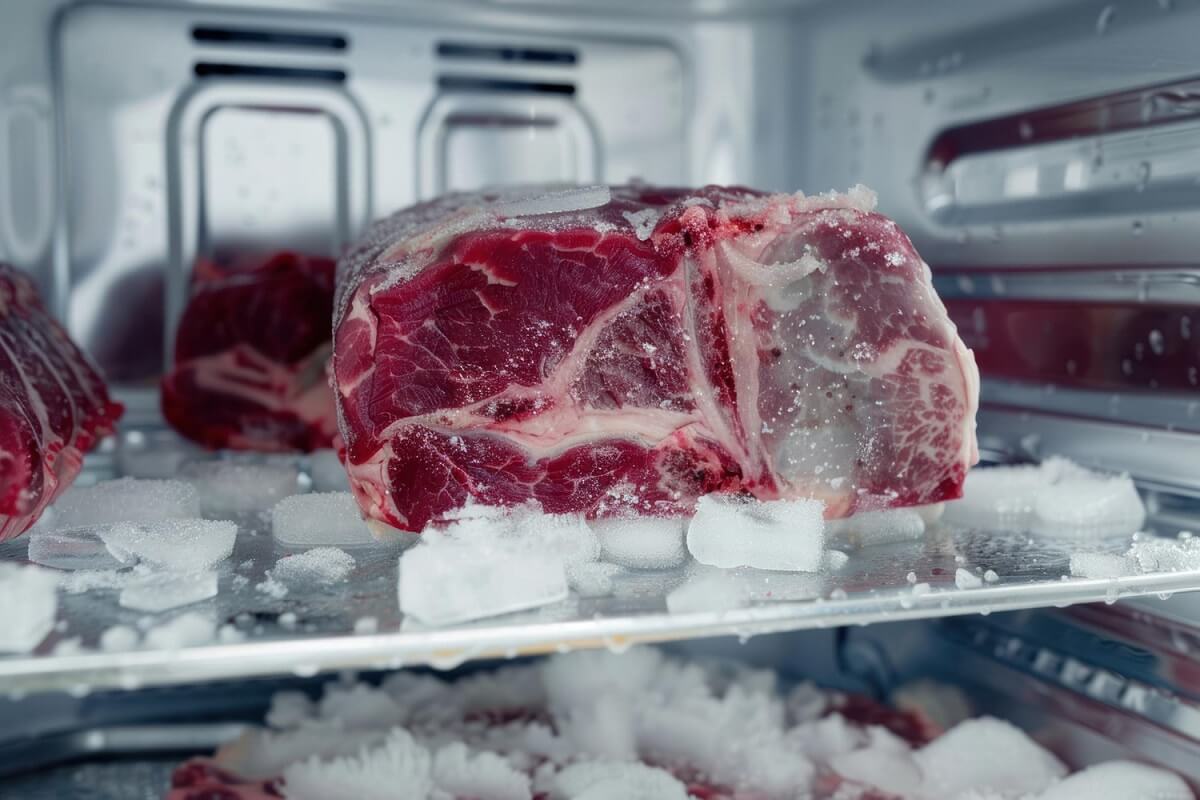Imagine a shipment of premium salmon thawing prematurely due to a refrigeration malfunction, or a pallet of organic beef losing traceability records mid-transit. For frozen meat and seafood distributors, these aren’t just hypothetical nightmares—they’re daily risks costing millions in recalls, wasted inventory, and reputational damage. Enter Warehouse Management Systems (WMS), the technological backbone transforming how the $1.2 trillion global cold chain industry safeguards perishables. In this guide, we’ll unpack how specialized WMS solutions are revolutionizing frozen protein logistics, ensuring compliance, efficiency, and profitability even at -18°C.

Frozen meat and seafood require uninterrupted temperature monitoring to prevent spoilage and bacterial growth. A mere 2°C fluctuation can reduce shelf life by 50% for products like shrimp or ground beef[^4][^8]. Modern WMS platforms like invasWMS integrate IoT sensors that track real-time conditions across storage zones, triggering alerts if temperatures deviate from preset thresholds.
Real-World Impact:
A UK-based 3PL provider reduced temperature-related losses by 63% after deploying Balloon One’s WMS, which automates corrective workflows like rerouting compromised batches to secondary freezers.
Regulations like the FDA’s Food Safety Modernization Act (FSMA) mandate full traceability for proteins. WMS solutions address this through:
WMS platforms automate FEFO (First Expired, First Out) prioritization, ensuring older stock ships before newer batches. For mixed-SKU pallets, algorithms factor in:
Case Study:
A Norwegian salmon exporter using VAI’s Frozen Food ERP reduced write-offs by 41% through AI-driven expiry forecasting[^7].
Blast freezers rapidly chill products to -40°C, preserving texture and nutrients. Advanced WMS like Frigo Group’s sync with freezing tunnels to:
| Regulation | WMS Compliance Feature |
|---|---|
| HACCP | Digital checklists for critical control points |
| FSMA 204 | End-to-end traceability reports |
| EU 853/2004 | Species-specific storage protocols |
Tools like Core-Warehouse’s 3PL WMS auto-generate audit-ready documentation, cutting compliance labor by 30hrs/month[^2].
Modular cold storage units (e.g., Alibaba’s walk-in solutions) require WMS that can:
Autonomous Mobile Robots (AMRs) equipped with grippers for frozen environments:
Solution:
Meat cuts and seafood portions often vary in weight until packaged. WMS with catch-weight management dynamically adjusts:
Example:
A Texas beef processor eliminated $220K/year in revenue leaks using Emergent Cold’s WMS, which auto-reconciles scale data with ERP records[^5].
ROI Breakdown: Why WMS Pays for Itself
| Metric | Without WMS | With WMS | Improvement |
|---|---|---|---|
| Order Accuracy | 82% | 99.5% | +17.5% |
| Energy Costs | $18.5K/month | $12.1K/month | -34.6% |
| Recall Costs | $450K/incident | $90K/incident | -80% |
| Labor Productivity | 85 picks/hr | 143 picks/hr | +68% |
Data aggregated from Logiwa and Principals Logistics[^1][^7].
Machine learning models analyze:
To optimize defrost schedules, reducing waste by up to 23%[^5].
Automate payments upon delivery confirmation, slashing invoice disputes by 65%[^6].
WMS platforms now track carbon footprints per SKU, helping brands like Frigo Group achieve 30% emission cuts via route optimization[^8].
Vendor Expertise: Look for meat/seafood-specific modules, like Royal 4’s traceability tools[^6].
In 2025, frozen meat and seafood distributors face a paradox: soaring demand vs. tightening sustainability mandates. A robust WMS isn’t optional—it’s the linchpin for navigating this complexity while protecting margins. From AI-powered expiry forecasts to blockchain traceability, the next-gen cold chain is here.
Your Next Move:
By embracing these insights, you’re not just storing protein—you’re future-proofing a perishable empire.